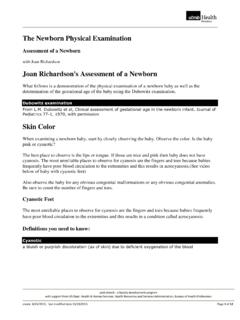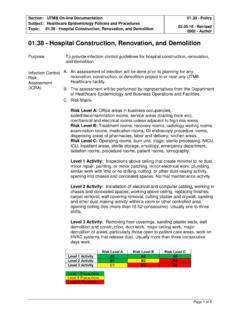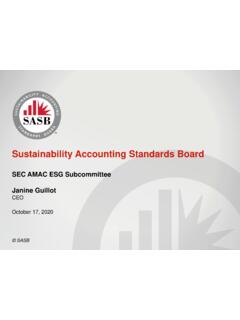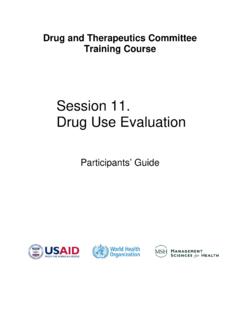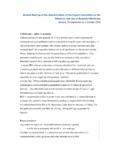Transcription of Institutional Handbook of Operating Procedures Policy 08.01
1 Institutional Handbook of Operating Procedures Policy Section: Health, Safety, and Security Responsible Vice President: EVP and CEO UTMB Health System Subject: Health and Safety Responsible Entities: Office of UTMB s Healthcare Epidemiology Department Office of Environmental Health and Safety Environment of Care Committee. Page 1 of 2 I. Title Guidelines for Storage of Patient Care Supplies II. Policy The following guidelines are intended to ensure that storage of patient materials and supplies on patient care units/clinics complies with best practices developed by the UTMB Healthcare Epidemiology Department, and Environmental Health and Safety and Environment of Care Committee. The following guidelines are to be followed to prevent contamination from flooding or routine cleaning, and to reduce the presence of combustible materials in the hospitals and clinics: 1.
2 Only rooms that have been designated for storage can be used as a storage room. Any change in functional usage of a space must follow the Institutional Policy for Space Management (IHOP ). 2. Rooms being used for storage should be evaluated by Environmental Health and Safety (EHS) to ensure compliance with the NFPA Life Safety Code 101. Contact EHS at 409-772-1781 3. All patient care supplies must be at least 5 inches from the floor. 4. All patient care supplies should be stored away from the edge of a sink to avoid possible splash contamination. 5. If used, fixed, or mobile wired shelving must have the lowest level shelf covered with a plastic cover. 6. Storage must maintain an 18 inch clearance from the ceiling in order to allow for proper function of the fire and safety sprinkler system; however, shelving secured to the wall may go all the way to the ceiling, encroaching into the zone within 18 inches of the ceiling provided that the shelving is more than 18 inches laterally away from any sprinkler heads.
3 7. Cardboard corrugated material delivered to healthcare areas should be broken down and the cardboard removed in a timely manner. Use of corrugated cardboard cartons in healthcare storage areas must be assessed by Healthcare Epidemiology to assure that the use of such cartons does not compromise the cleanliness or sterility of patient supplies. 8. Internal shipping boxes (not corrugated boxes) may be used to dispense sterile and clean supplies but should be discarded when the box has been emptied. 9. Office supplies ( paper, pamphlets, etc.) and approved corrugated boxes should be stored on a different shelf underneath patient care supplies or different area of the closet. When possible store office supplies in a different closet. 10. The use of wooden pallets is limited to the transportation use of logistics and delivery personnel.
4 Only pallets made of synthetic material are allowed in storage rooms where patient care supplies are located. 11. Areas under sinks in patient care areas must be cleared of storage at all times to prevent possible contamination in the event of a water leak. 12. Clean linens in carts and storage areas should be covered at all times. IHOP Policy Page 2 of 2 13. Needles and syringes are to be kept in a secure area to protect from tampering or theft. A secure area is one where staff is providing patient care, or staff is present and effectively ensures that access to the area or storage device is restricted to authorized individuals, and patients and visitors are not allowed access without the supervision or presence of a health care professional. Secured areas would include, but not be limited to, nurse s stations that are staffed or in the immediate area at all times, storage alcoves that are closed and where the contents of the storage is not readily apparent (through labels or visible windows) and where staff are in the area at all times, and locked rooms or cabinets/drawers.
5 If there are any questions as to whether a needle or syringe storage area is considered a secured area, a proactive risk assessment should be conducted and documented, and the results reported to the Safety & Security Management subcommittee . III. Procedures Storage Policy compliance will be monitored during Environment of Care Tours and EHS inspections of the patient care areas. IV. Definitions Patient Care Supplies: materials or supplies that will be used in the administration of patient care. V. References National Fire Protection Association NFPA 101 Life Safety Code 2012 edition. VI. Dates Approved or Amended Originated: 08/19/2006 Reviewed with Changes Reviewed without Changes 12/19/2018 11/19/2019 VII. Contact Information Healthcare Epidemiology (409) 772-3192





